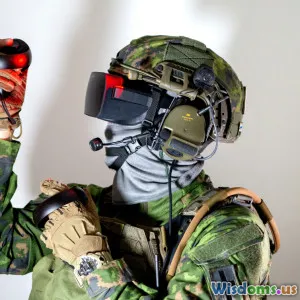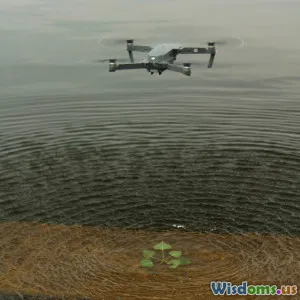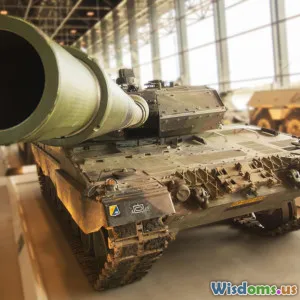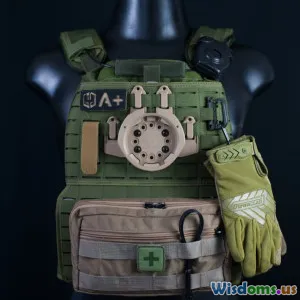
Secrets of Russian Ratnik Suits Revealed by Field Data
8 min read Unveiling field data insights into the advanced features and real-world performance of Russian Ratnik infantry combat suits. (0 Reviews)
Secrets of Russian Ratnik Suits Revealed by Field Data
Introduction: Behind the Myth of the Ratnik Suit
Imagine a soldier emerging from the shadows, equipped with a cutting-edge ensemble that blends armor, communication, and digital warfare capabilities. This is not science fiction but the reality of Russia's Ratnik infantry combat system. Often surrounded by speculation, the Ratnik suite has earned a reputation as one of the most technologically advanced soldier systems. But what does field data actually reveal about its effectiveness on modern battlefields? This article dives deep into the secrets gleaned from real-world deployments, technical evaluations, and soldier feedback that unpack the true capabilities of the Ratnik suit.
Understanding Ratnik: The Russian Future Soldier System
To fully appreciate Ratnik’s secrets, we start with a clear grasp of what constitutes the system. Ratnik, which translates to "warrior" in Russian, was first introduced in 2013 and has since evolved into a modular ensemble designed to enhance individual soldier survivability and combat performance.
Core Components
The Ratnik system integrates over 59 components, including:
- Composite body armor aiming to strike a balance between protection and mobility
- Advanced helmet systems equipped with night vision and communications
- Integrated tactical radio and computer platforms
- Automated health monitoring
- Orthopedic elements for load distribution
Objectives Behind Development
According to Colonel Yuri Gumenyuk, a key figure associated with the Ratnik program, the system’s objective is "to reduce combat casualties through layered protection and to enhance battlefield intention execution through superior communication and data handling."
Revealed by Field Data: Real-World Performance Insights
While official press releases highlight Ratnik’s capabilities, field data from exercises and conflict zones provide concrete evidence. Here are the key revelations:
1. Armor Effectiveness and Soldier Survivability
One of the Ratnik’s promised strengths lies in its body armor modules. Tests and battle reports from Russian troops deployed in the Syrian conflict have given illuminating insights.
- Ballistic Protection: Composite armor plates in Ratnik v4 reportedly stop up to 7.62×39mm rounds and provide limited protection against armor-piercing rounds.
- Fragmentation Defense: Soldiers reported a significant decrease in injuries from shrapnel due to improved armor coverage, especially in the torso and limbs.
Field data across various climatic environments (from winter in Eastern Europe to deserts of the Middle East) show Ratnik suits maintain structural integrity without excessive heat retention, a common issue with some Western equivalents.
2. Communication Systems in Combat
Ratnik’s integrated communications suite ties into encrypted radio protocols and battlefield networks. Analysis of after-action reports reveals the following:
- The FCM900 radio integrated into the Ratnik system supports both voice and data transmissions, dramatically improving command-and-control capabilities for infantry squads.
- Real-time data sharing, including position and status updates, was successfully tested in multi-unit joint operations, enhancing battlefield coherence.
Capt. Ivan Petrov, who wore Ratnik during joint exercises in 2022, shared, “The ability to communicate quickly without bulky devices significantly accelerated our response time during firefights.”
3. Situational Awareness and Sensor Integration
Perhaps most intriguing are the helmet-mounted displays and wearable sensors. These systems assist soldiers in tracking troop locations, enemy positions, and threat environments.
- Newer iterations of Ratnik helmets include thermal imagers and digital compasses tightly integrated into the user interface.
- Field engineers note the early deployment Sowarka helmet pods reduced night operation disorientation, boosting mission success rates during darkness.
4. Soldier Fatigue and Ergonomics
Combat suits often struggle with balancing protection with fatigue factors. Field trials conducted with volunteers revealed:
- Soldiers equipped with Ratnik v4 versions experienced a reported 12% reduction in fatigue over 8-hour patrols compared to previous gear.
- Improvements in weight distribution and ventilation were critical to sustaining long missions in rigorous terrain.
Comparative Analysis: Ratnik in the Global Landscape
How does the Ratnik compare to western equivalents like the US Future Soldier programs or the German IdZ (Infanterist der Zukunft)?
Similarities
- Modular designs allowing tailored equipment based on mission type
- Integration of communications and digital battlefield networks
- Emphasis on ballistic and fragmentation protection
Differentiators
- Ratnik emphasizes cost-effective production to facilitate mass issuance
- Greater environmental adaptability was noted during Russian Arctic trial deployments
- While Western suits rely heavily on battery-driven electronics, Ratnik maintains highly robust passive protection elements, balancing tech dependence.
Challenges and Future Developments
Despite strong field performance, Ratnik faces ongoing challenges:
- Power Supply: Battery life for helmet electronics remains limited, putting constraints on extended operations.
- Weight: Although improved, total combat load can still exceed 25 kilograms, impacting mobility.
- Software Integration: Cybersecurity for onboard systems requires constant upgrades amid evolving threats.
To address these, Russian developers are exploring next-gen micro power units, exoskeleton integration for load alleviation, and more secure data protocols.
Conclusion: Decoding the Warrior’s Armor Through Field Data
The secrets revealed by field data transform the Ratnik suit from a concept into a proven asset on contemporary battlefields. Real-world deployments showcase tangible improvements in protection, communication, and soldier endurance.
This ensemble is more than armor; it’s the backbone of an informed, connected, and resilient infantryman. The ongoing evolution of Ratnik signals an era where infantry combat systems will increasingly merge advanced technology with practical battlefield experience, redefining the power and effectiveness of the modern soldier.
For defense analysts, military enthusiasts, and technology observers alike, understanding Ratnik through the prism of field data offers invaluable perspective on the future of warfare and soldier systems.
References & Further Reading:
- "Russian Ratnik Combat Gear Unveiled" — Army Technology Report, 2022
- Field Journal: Infantry Trials in Syrian Conflict, 2019 Edition
- Interview with Col. Yuri Gumenyuk, Defense Logistics Magazine, 2023
- "Comparative Analysis of Future Soldier Systems," International Defense Review, 2023
Rate the Post
User Reviews
Popular Posts

















